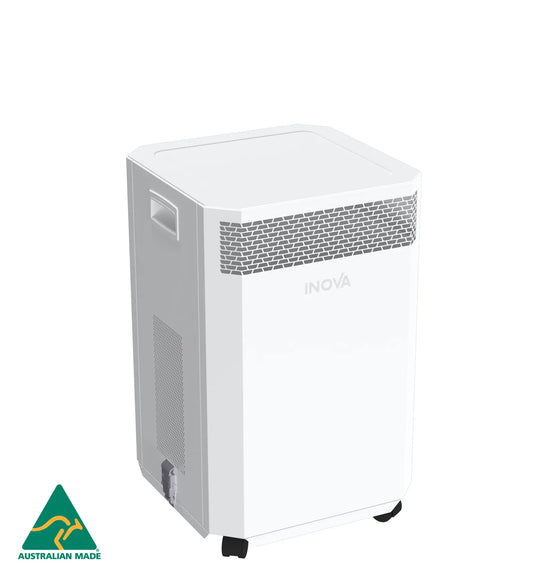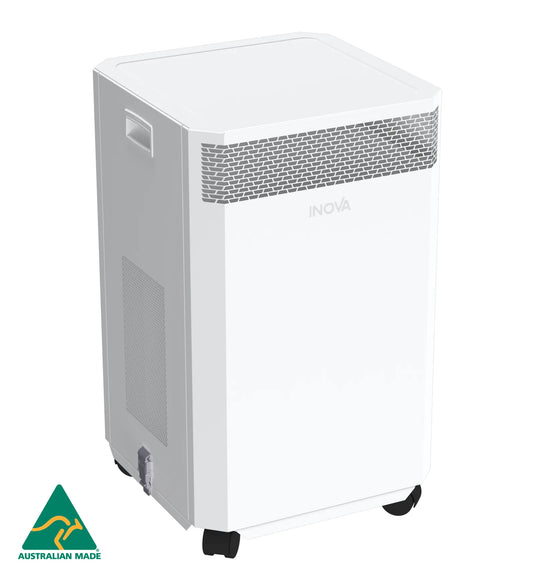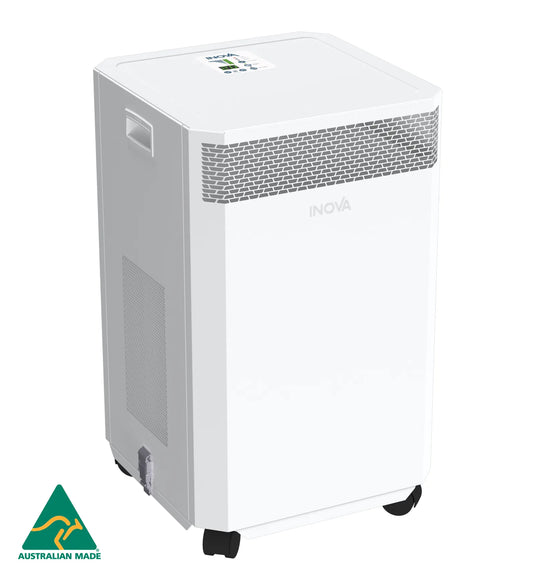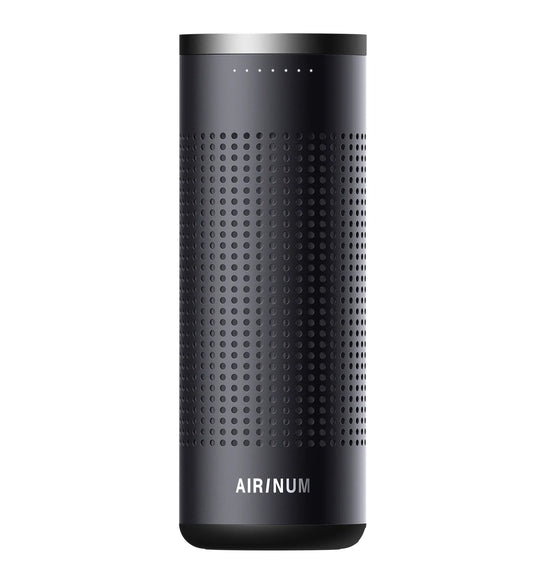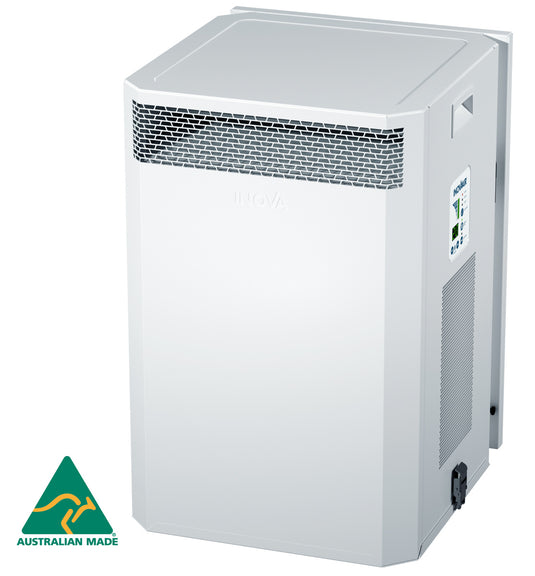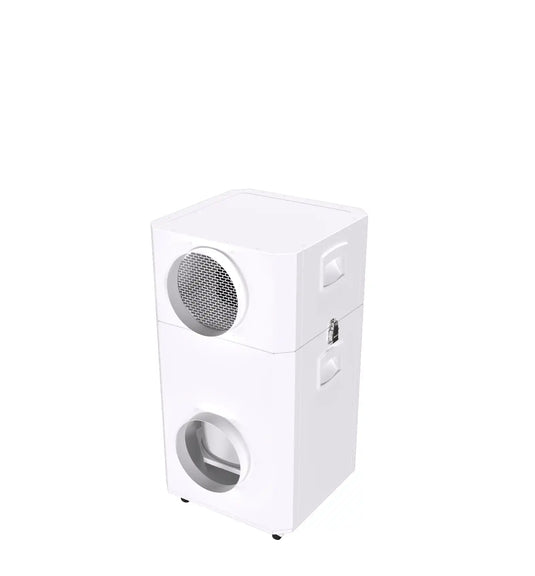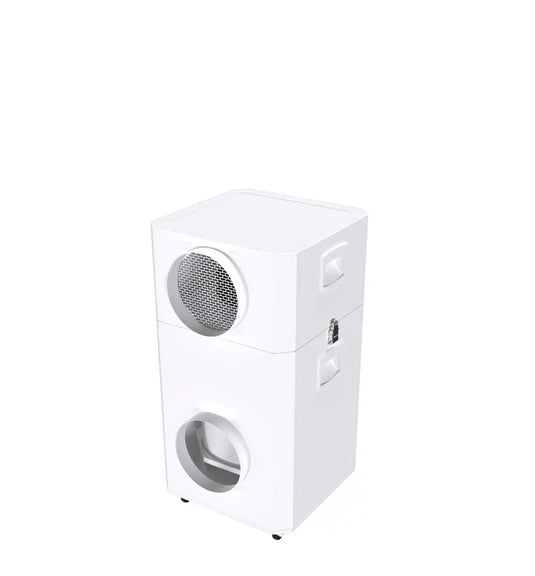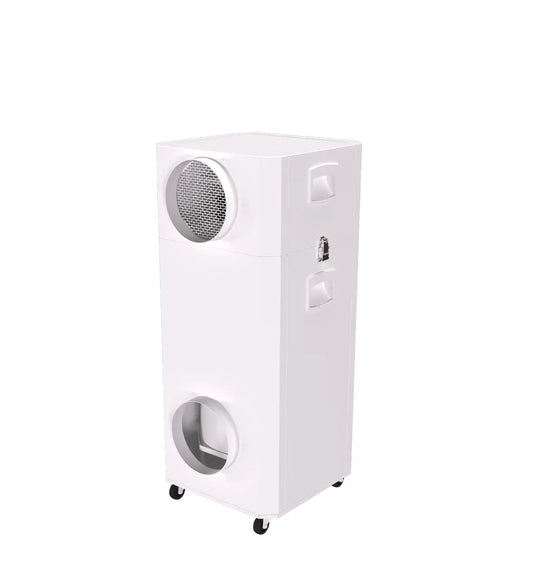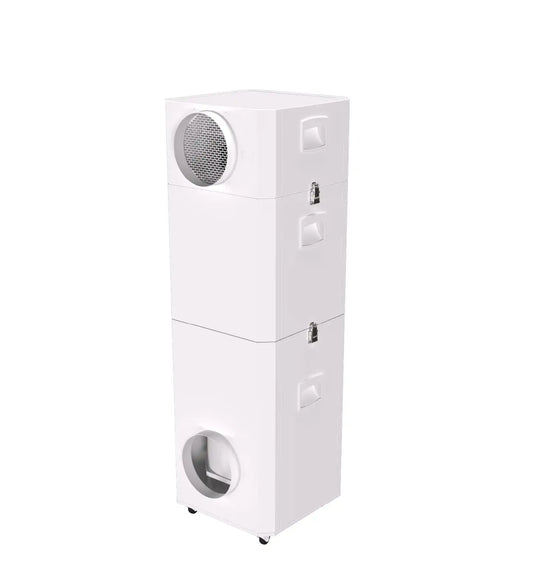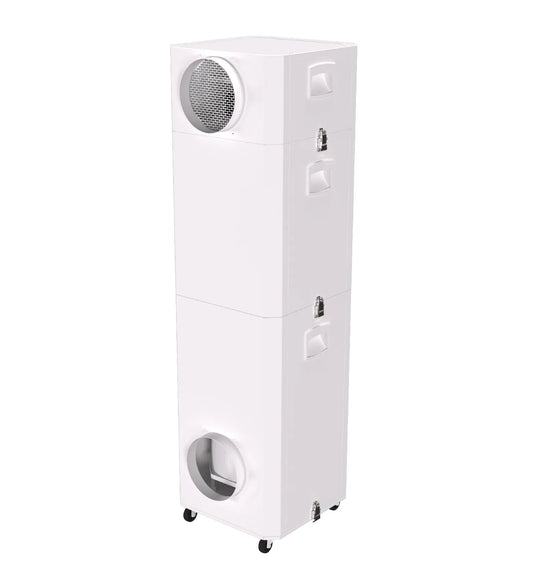How Accurate Are Air Quality Sensors in Air Purifiers?
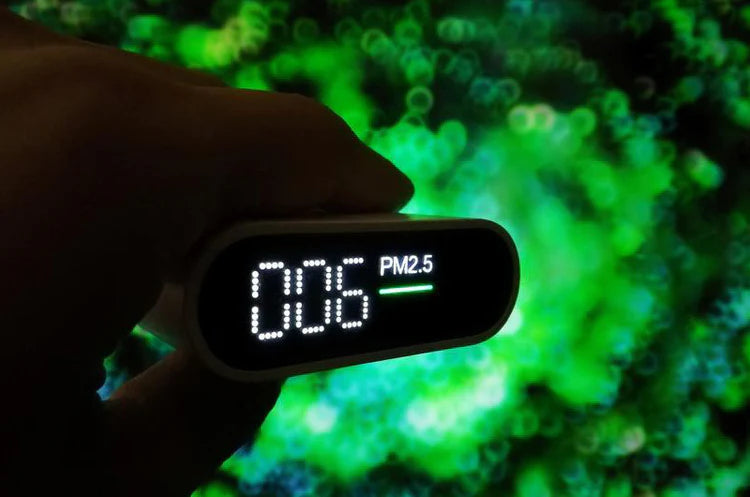
Freestanding air purifiers with built-in sensors are becoming increasingly popular, but there are some important things you need to know about the accuracy and effectiveness of these sensors.
At INOVA, we do not incorporate sensors in our freestanding air purifiers for the reasons discussed below.
The sensors are designed to detect larger particles, such as PM 2.5 (2.5 microns), but approximately 98% of airborne particles are less than 1 micron; these are not detected by PM2.5 sensors, and 0.3 micron particles and smaller are of the greatest concern in relation to our health as they penetrate deeper into the lungs.
To give you an idea of just how tiny a 0.3 micron particle is, a human hair is 50 to 150 microns; a grain of sand is 90 microns; dust and pollen 10 > microns.
It's important to be aware that particle concentrations increase exponentially with smaller particle sizes, so these sensors give a false sense of security to people who refer to them because concentrations of PM 2.5 particle matter are so much lower than PM 0.3 particles. Many air purifiers are good at removing larger PM2.5 but not so good with more difficult to capture particles like finer PM 0.3. This is because generally, PM 0.3 particles are the Most Penetrating Particle Size (MPPS), this means it's the hardest particle to capture and most likely to pass through a filter particularly the synthetic filters found in most appliance stores.
The technology to measure PM 0.3, or 0.3 microns, is also more expensive and usually limited to commercial grade laser particle counters, so you wouldn't find an air purifier which measures this size and nor would a consumer in most cases want to pay a high premium of many hundreds of dollars for a sensor capable of doing this accurately - the sensor would in most cases cost more than the air purifier itself.
Measuring particles of 1 micron or less with a laser particle counter will detect particles from road traffic pollution where high concentrations of PM1 and 0.3 are most present. In such cases, an inbuilt air purifier sensor may tell you the air quality is good, when in fact, it isn’t as particles are much finer than what it is capable of measuring.
Elevated particulate levels are likely in your home if you live within one kilometre of a main road or freeway, the closer you are to the pollution source, the higher the concentrations.
Some air purifiers include TVOC sensors which give an overall measurement of Total Volatile Organic Compounds, but they are not specific; they summarise concentrations of these gases to give you a total TVOC reading.
"TVOC is a grouping of a wide range of organic chemical compounds to simplify reporting when these are present in ambient air emissions," according to the Australian Department of the Environment and Energy.
If you cook food in your kitchen or diffuse pure essential oils, you will have some levels of VOCs. Humans and pets and natural gases can also contribute to high VOC levels. VOCs aren’t bad in themselves, but rather a general marker. Low-cost sensors in mass-produced air purifiers don't differentiate between VOCs that are harmful and those that aren’t. If there are high levels of, for example, formaldehyde, most sensors will not tell you unless designed for this specific measurement.
TVOC sensors contain elements and are not designed to run continuously; they have to be switched off for intervals; otherwise, they lose accuracy and will give false readings, so TVOC readings are not continuous. They also have short service life intervals, usually a maximum of 2 years.
At INOVA, we back all of our home air purifiers with a sensor with a maximum life of only 2 years. The majority of our customers have not even replaced HEPA or carbon filters by this stage.
Another thing to keep in mind with IAQ sensors in air purifiers is there is no raw data that you can interpret – these sensors are providing you with the air purifier manufacturer's interpretation of "good" and "bad", with no understanding of what they’re measuring, and what that means for you. The manufacturer decides the algorithm of measuring levels of various airborne particles, and so they define how it’s going to work; and if you want to delve into the details of how and what it's measuring such as actual particle concentrations you can’t.
If you want to measure air quality, a particle counter is a much more accurate way of looking at particles, but there is no true equivalent for VOCs yet. If you get a TVOC meter, it’s not going to give you very specific information on what the source of the VOC actually is, and you can get false readings.
The Dylos DC 1100 Pro Air Quality Monitor is a good quality particle counter for home applications.
A particle counter that measures down to 0.3 microns will typically cost a few thousand dollars; the brand we use in our factory is Met One Instruments.
We hope this information helps you make the right decision for your household when investing in an air purifier, particularly given the price point air purifiers with sensors are sold at.
For more on the effects of traffic pollution on your health, read our blog post about how living near a main road could be impacting your health.

